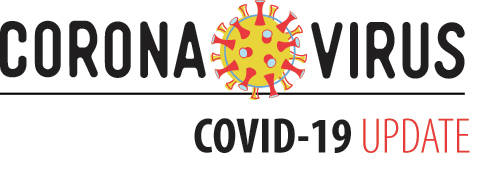

The status of testing for COVID-19 is one of the most frequent questions asked during the Highland County Health Department’s weekly Facebook Live updates.
The U.S. Centers for Disease Control and Prevention (CDC) has reported that antibody tests could be wrong up to half the time, something the Food and Drug Administration is also cautioning about.
Highland County Health Commissioner Jared Warner told The Times-Gazette that antibody tests were “a useful tool, but not perfect,” and that two key criteria came into play when dealing with antibody tests: specificity and sensitivity.
“Specificity means is it specific to COVID-19, or does it have the potential to cross react to other coronaviruses or viruses in general,” Warner said. “In these tests, we want to make sure it’s only going to give us positives if we truly have COVID-19.”
Sensitivity is the second component to the test, he said, and it has to be sensitive enough to pick up the virus when it’s present.
He said that in a laboratory setting, technicians would run 100 samples that are known to be infected along with 100 samples that aren’t infected, and then measure the test results to verify how accurate the test kit was, which then reveals how specific and sensitive it is.
“What they’ll also do, in addition to known COVID-19 samples,” Warner said, “is they’ll run this antibody test through other samples that we know are positive for influenza and other coronaviruses, and all the other things that are floating around out there, because we don’t want that false positive result.”
The CDC described antibody tests, which are often referred to as serologic tests, as tests that look for evidence of an immune response to infection, since antibodies can be detected in some persons within the first week of the onset of illness.
However, they are quick to point out that antibody tests are not accurate enough to use in formulating important policy decisions, noting three important aspects in their advisory.
Serologic test results should not be used to make decisions about grouping persons residing in or being admitted to congregate settings, such as schools, dormitories, or correctional facilities, or in decisions about whether or not a person should return to the workplace.
It also recommends that any health official or health care provider who employed antibody tests should use the most accurate test they can find, and might need to test people twice.
The CDC said that in most of the country, including heavily impacted areas, the prevalence of COVID-19 antibody is expected to be low, ranging from less than 5 to 25 percent, and that testing at this point might result in relatively more false positive results and fewer false-negative results.
It cited as an example a population where the virus had a prevalence of 5 percent, and that a test with 90 percent sensitivity and 95 percent specificity would yield a positive predictive value of just 49 percent. In other words, the test would show that less than half of those testing positive would truly have antibodies.
In its new advisory concerning antibody testing, the CDC said that tests give more accurate results if the disease being tested for is common in the population, and if an infection has only affected a small percentage of people being tested, even a small margin of error in that test would be heightened.
It said that a false positive will make someone think they have been infected when in reality they have not.
There’s little evidence that shows whether or not having been infected gives a person immunity to reinfection, and that has doctors concerned that people will behave as if they are immune if they get a positive antibody test that may or may not be correct.
In its updated guidelines, the CDC said there should not be an assumption that individuals with truly positive antibody test results are protected from future infection, and that serologic testing should not be used to gauge immune status in individuals until the “presence, durability and duration of immunity is established.”
“Normally, the FDA goes through an extensive approval process before the approval label is given to any testing kit,” Warner said. “But because COVID-19 popped on the scene so quickly, we’ve got a lot of test kits out there that don’t have the full, formal FDA approval.”
Many of those kits have what is referred to as Emergency Use Authorization, which means that the FDA has examined the test results provided by the company and in essence said, “It’s good enough for use now and we think it’s fairly reliable.”
“The issue we run into in populations like ours is where we don’t feel there is a high prevalence of COVID-19 in Highland County,” Warner said, “then there’s a higher likelihood that if we get a positive test, it’ll be a false positive.”
Highland County COVID-19 case numbers showed a marked increase since Thursday’s Facebook Live news conference, with data from the health department showing that as of Monday there had been 21 confirmed coronavirus cases with six listed as probable, for a total of 27.
Nineteen persons had recovered and one was deceased, with seven listed as currently sick and of the six total hospitalizations, one was still in the hospital.
Those being monitored for symptoms or quarantined had doubled since Thursday, with the count now standing at 32.
Reach Tim Colliver at 937-402-2571.



